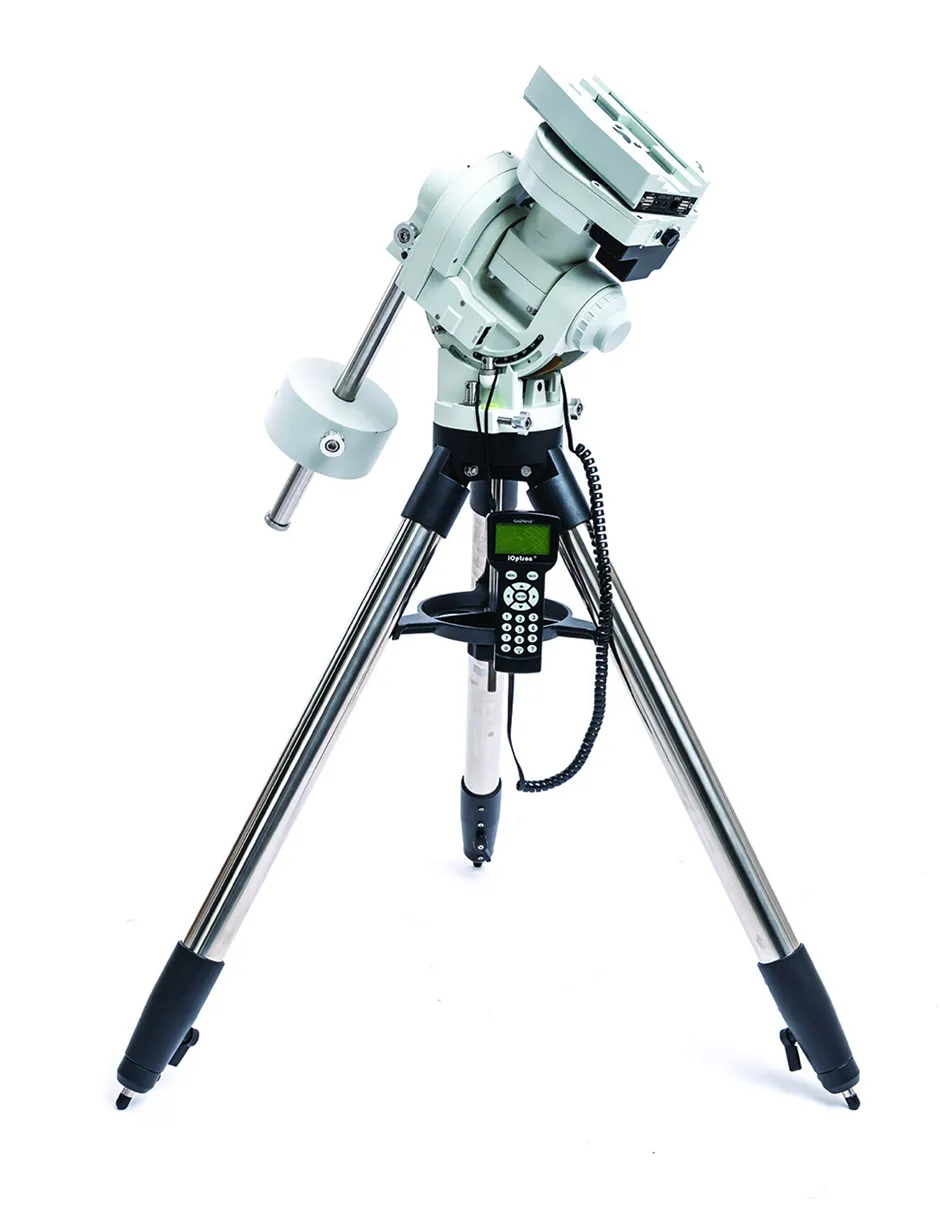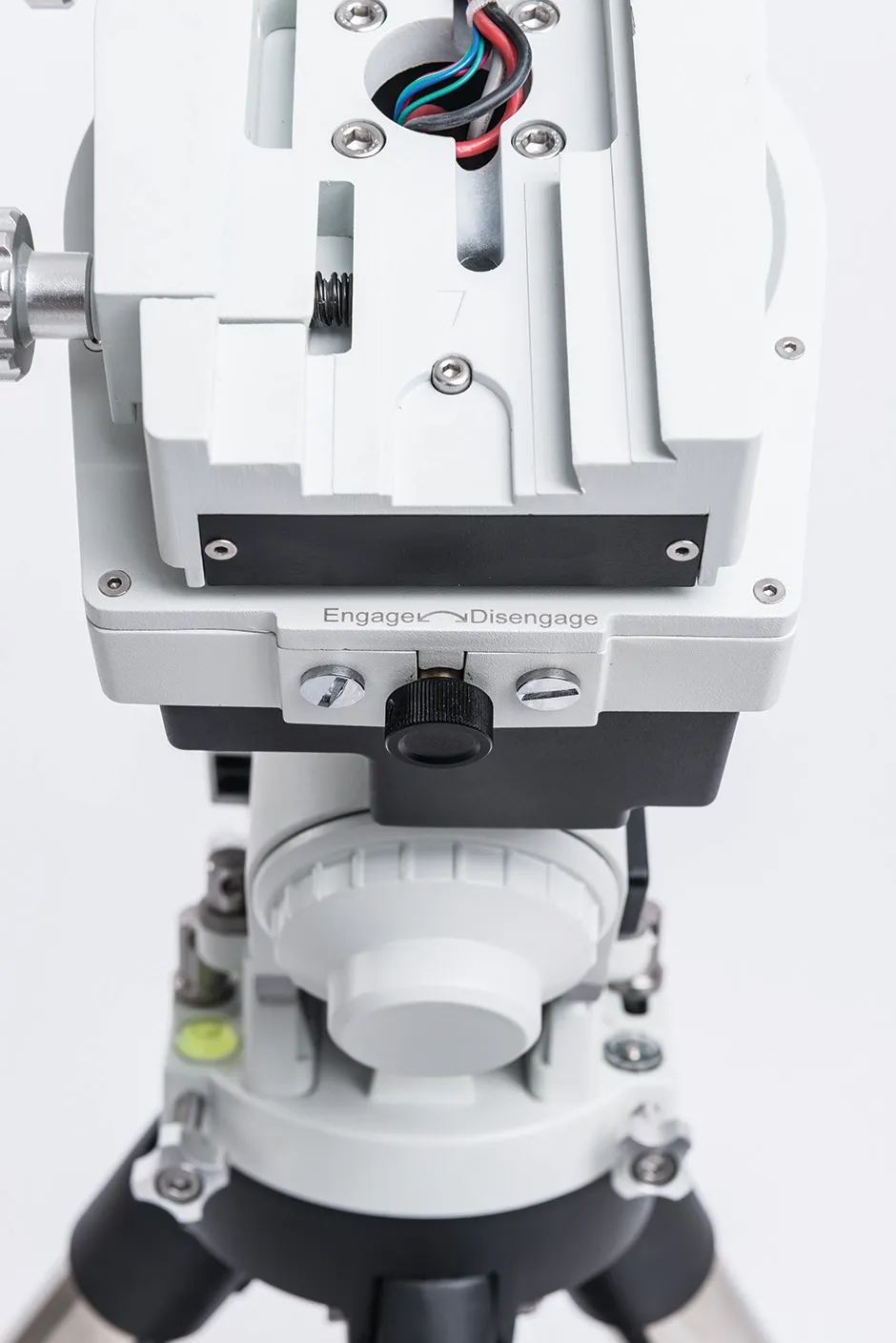Price: £2299.00
Weight: 12.3kg
Supplier: Altair Astro
Telephone: 01263 731505
Website: www.altairastro.com
Astronomers want all sorts of things from a telescope mount, but nothing is more challenging than the quest for good stability allied with lightness.
The CEM 60 tackles these conflicting needs head on with its unusual Z-shaped design.
The mount is supplied in a substantial, internally sculpted aluminium flight case.
This case is such an excellent fit that it ensures the safe delivery and later transport of the mount.
Paradoxically for a mount so clearly capable of portability, the tripod is an optional extra – although in fairness many of these mounts will be bought for installation on piers in home observatories.
The tripod depicted here was loaned to us for the purposes of this review.
The offset Z shape of the CEM 60 looks very different to other equatorial mounts and at first glance it is not immediately obvious how it works.
Closer inspection reveals that this novel design results in the RA axis being substantially supported in main bearings at two locations.
Placing the mount load between two bearings in this manner should produce a better mechanical solution than the usual mounting method that has the bearing to one side of the payload.
The counterweight bar is offset from the centre line, completing the Z shape.

Achieving an accurate balance in both the RA and dec. axes is easy, because once the clutch mechanism is disengaged both axes rotate fluidly.
Unusually, the mount head sits in a pair of crescent-shaped cups on the top of the base section and is retained in position by a pair of small locking capstans.
This simple arrangement allows the whole mount to rotate easily for altitude adjustment.
The supplied Go2Nova 8407 hand controller has a full feature set and a database of over 358,000 objects.
It has an internal 32-channel GPS receiver that supplies date, time and location information automatically and it took less than 45 seconds to initialise at the start of each of our observing sessions.
Priming the mount
A good polar alignment is a prerequisite for accurate slewing and the Go2Nova has two methods to help you achieve this.
The first produces a graphical display showing the position of Polaris in relation to the north celestial pole.
Simply rotate the RA axis until the bubble level on the polarscope is centred, then adjust the altitude and azimuth of the mount to place the view of Polaris in a matching position to the display.
For southern hemisphere use, Sigma Octantis takes the place of Polaris.
The second method, called ‘BrightStar’, doesn’t require a view of Polaris – it is an iterative process requiring one star at high altitude and another near the horizon.
The azimuth adjustment, using two posts and bolts on either side of the mount, was simply a joy to use.
Following polar alignment there is a choice of one-star or multi-star alignment.
Using the latter option with three stars we found Go-To accuracy to be excellent, with our chosen objects across the sky appearing within our 17mm eyepiece.
Accuracy can be further improved by choosing up to nine stars for the alignment.
We were also very impressed with how quiet the mount was when slewing at full speed.
Your neighbours won’t hear this one.
And when it came to imaging, we captured five- and 10-minute guided exposures using our 98mm refractor with an off-axis guider and were delighted with the very round stars that we recorded.
The mount was certainly easy to guide using the industry standard ST-4 port for control.
The CEM 60 mount should be on any intermediate user’s shortlist and we would particularly recommend it for astrophotography, a situation where payload capacity and stability are so important.

Defined by design
The CEM 60 is the second of iOptron’s unusual Z shaped designs, the first being the company’s smaller ZEQ25 GT mount. This design is currently unique to iOptron.
An important design element of this mount is that it keeps the centre of gravity directly over the centre of the tripod and as low as possible, giving natural balance and increased stability.
With the RA axis supported at both ends, this allows a rugged mounting to be produced without the bulk and additional materials of a more conventional design.
This makes the CEM 60 easy to transport but also capable of a high payload capacity of 27.2kg.
These virtues make the mount a good choice for portable astrophotography where a good payload capacity and sturdiness are very appealing.
As the counterbalance shaft is offset and bolted onto the RA housing rather than inserted through it, the polarscope sighting tube is never obstructed thus allowing unrestricted access to the polarscope.
Spring-loaded saddle clamp
The saddle clamp is compatible with both the standard Vixen and the larger Losmandy styles of dovetail bar. A generous 114mm clamping section ensures a firm but non-marring attachment for your telescope. Twin spring-loaded hand bolts allow easy tightening even when wearing gloves.
Altitude adjustment Hand controller
The Go2Nova 8407 hand controller has a generous eight-line display and integrated temperature control. With a huge database of in excess of 358,000 objects – including Solar System, NGC, Messier, Caldwell, Herschel 400, UGC, IC, GCVS, Abell, binary stars and the SAO catalogue – there’s no shortage of objects to locate and observe.
Gear system
To minimise any backlash in the worm gear drive system, the CEM 60 uses a magnetically loaded gear system to maintain a constant mesh. An unusual clutch mechanism comprised of a small adjustment knob allows for free rotation of each axis for balancing purposes, but a solid engagement when locked.
Connections
To assist with cable management, the CEM 60 has a range of extended ports mounted on the rear of the dec. axis head. There are four USB 2.0 sockets, two 12V power sockets and an ST-4 autoguiding port. Connections to a computer and 12V supply are on the panel surrounding the polarscope.
This review originally appeared in the January 2015 issue of BBC Sky at Night Magazine.
